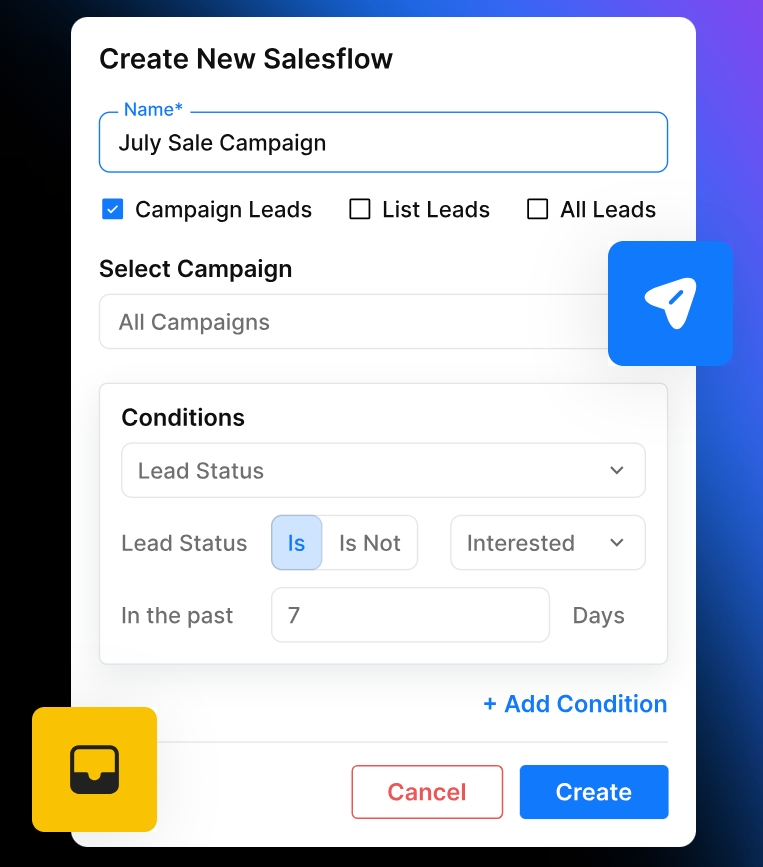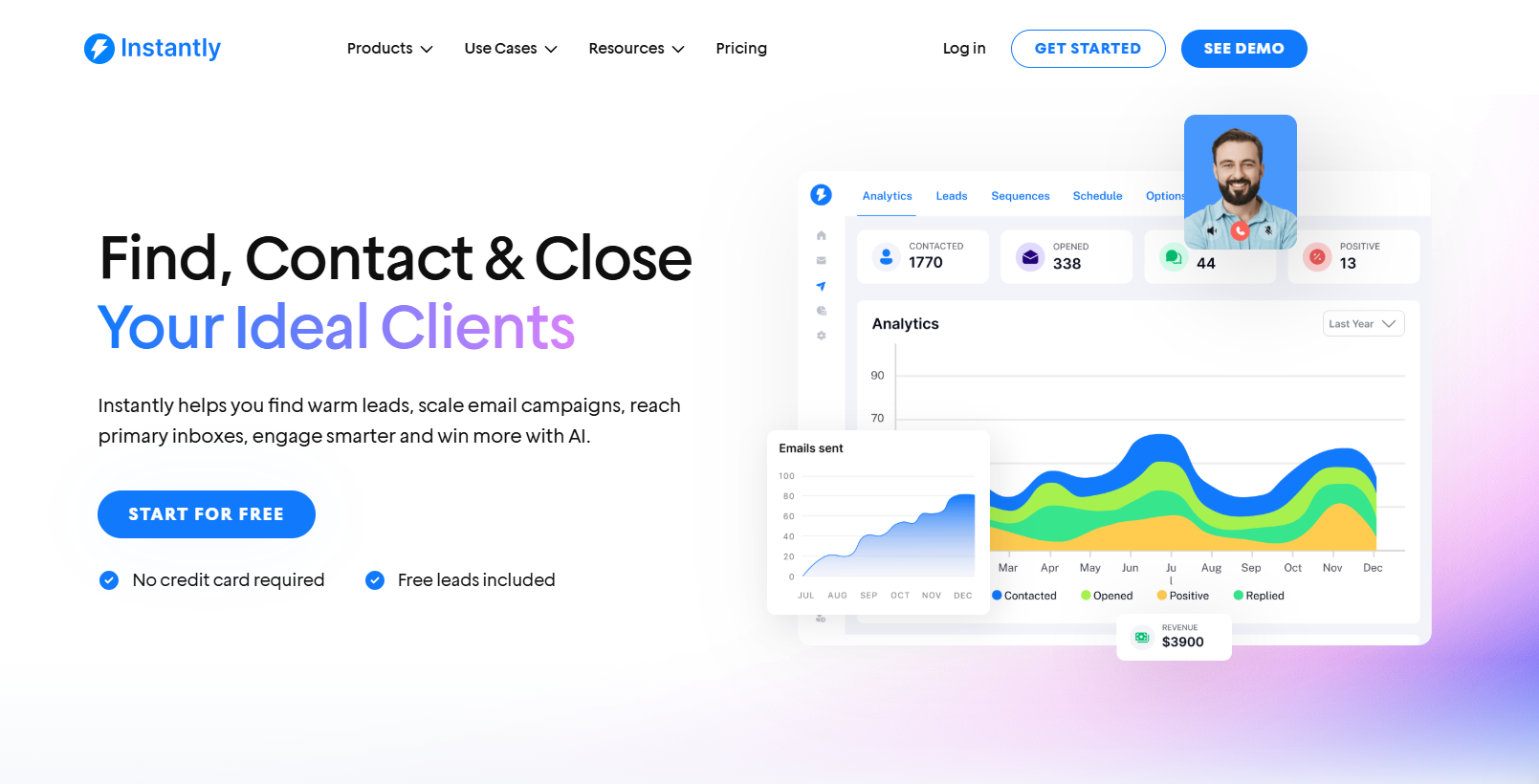Your sales team works 40+ hours weekly, yet only a portion of that time involves actual selling. The other hours? Vanish into administrative black holes: logging activities, scheduling follow-ups, and manually updating CRMs that should update themselves.
This isn't just inefficient—it's expensive. Most sales automation plans fail because companies buy fancy tech and then automate everything regardless of ROI. They end up with shiny dashboards, confused salespeople, and the same mediocre results.
Smart automation targets only the tasks that steal selling time without adding value. The goal isn't replacing sales skills but eliminating the administrative overhead that prevents your team from using those skills. Let's focus on automations that pay for themselves by putting more hours back into genuine customer conversations.
Three Automations That Deliver Immediate ROI
Forget the AI-powered sales assistant that costs six figures. Ignore the all-in-one platform that promises to "revolutionize" your pipeline. The highest ROI comes from fixing the basics first—the daily time-sucks that keep good salespeople from excelling.
Email Sequences That Never Forget to Follow Up
That hot prospect you emailed last Tuesday? They're still waiting for your follow-up message. The one you promised to send. The one sitting in your drafts folder. The one that would move your deal forward—if you hadn't gotten pulled into three fire drills and forgotten about it entirely.
This isn't just an occasional slip-up. Most sales require multiple follow-ups, yet many reps give up too early. Good sales email sequence automation fixes this broken equation by:
- Sending perfectly timed follow-ups without manual tracking
- Varying message formats to avoid the "I'm clearly using a template" look
- Adapting to prospect behavior (changing course when someone clicks but doesn't reply)
- Building in pause points where human intervention adds value
The most effective sequences don't look automated at all. They use natural language, respond to actual user behavior, and incorporate personal touches at key decision points.
Many sales teams have recovered significant opportunities by adding automated follow-up sequences for no-show demos—without any manual intervention from reps.
That's the power of intelligent follow-up automation: it recovers opportunities that would otherwise fall through the cracks while letting reps focus on high-value conversations.
Meeting Scheduling: End the Email Tennis Match
"How's Tuesday at 2pm?"
"I'm booked then. How about Wednesday at 10 a.m.?"
"I'll be traveling. Thursday afternoon?"
"I have a conference. Next Monday?"
Four emails later, you've wasted 15 minutes and still haven't booked the meeting. Multiply this by 20+ prospects weekly, and your team loses several hours to calendar ping-pong—hours they could spend closing deals.
Scheduling automation eliminates this ridiculous ritual. The best systems:
- Show only your actual availability, updated in real-time
- Let prospects pick times without awkward back-and-forth
- Create calendar events with video conferencing links
- Send automatic reminders to reduce no-shows
- Include pre-meeting questionnaires to make conversations more productive
The ROI appears immediately. Sales teams using meeting automation often recover almost a full day of selling time weekly without hiring additional staff.
But not all scheduling tools deliver equal value. Basic schedulers can create almost as many problems as they solve, particularly when:
- They don't sync properly with your actual availability (double-bookings)
- They don't respect buffer times between meetings (back-to-back exhaustion)
- They can't handle time zone differences (midnight meeting invites)
- They exist separately from your sales engagement platform (data silos)
Integration matters more than features. Your scheduling tool should connect directly to your sales CRM, email sequences, and sales engagement platform. When someone books a meeting, it should pause outreach sequences, update their CRM status, and trigger preparation workflows.
This isn't just convenience—it maintains trust. Nothing damages credibility like automated emails asking for a meeting after the prospect has already scheduled one.
Activity Capture: The Death of Manual Data Entry
"Did you update the CRM?" The five words every salesperson dreads—right after "Let's role-play this call."
Manual data entry steals selling time and produces questionable results. Reps rush through it, miss details, or skip it entirely. Your CRM becomes a graveyard of incomplete data, obsolete notes, and missed opportunities.
Activity capture automation solves this by:
- Recording emails, calls, and meetings without manual input
- Logging key interaction details directly in your CRM
- Creating follow-up tasks based on conversation content
- Identifying which contacts engaged with which materials
With proper activity capture, your CRM goes from a management surveillance tool into a genuine sales asset. Reps spend less time typing notes and more time building relationships. Your data becomes reliable enough for meaningful sales forecasting and coaching.
The most valuable activity capture extends beyond basic logging to include conversation intelligence—identifying topics discussed, customer objections raised, and next steps promised. This turns activity data into actionable insights without additional work from your reps.
Implement Without Chaos: Start Small, Scale Fast
Most sales automation projects crash because teams try changing everything overnight. The VP buys an expensive platform, IT configures it based on imaginary workflows, and then the sales team gets an email: "Starting Monday, we will use the new system."
Chaos ensues. Nobody closes deals for weeks. Half the team reverts to spreadsheets. The VP blames "adoption issues," not their flawed implementation.
Here's the smarter approach:
First, map what your team does—not what your playbook says they should do. Shadow your top performers. Where do they spend their time? What manual tasks slow them down? Which processes cause the most frustration?
Your automation priorities emerge from this reality check. Maybe your reps waste hours finding phone numbers. Perhaps they copy-paste the same email responses repeatedly. Or they might spend Fridays manually updating forecasts.
Next, pick one pain point—just one—and automate it with a small test group. Choose a team that's open to change but not so desperate they'll accept anything.
Set a short time frame—no more than two weeks—to test and refine. Measure the hours saved and impact on outcomes, not just whether the automation "works." A perfectly functioning tool that doesn't improve results isn't worth keeping.
Only after you've proven value with one team should you expand. Don't roll out to the entire organization at once. Add teams sequentially, incorporating feedback as you go.
This "small wins" approach creates internal advocates who drive adoption better than any training program. When teams see their peers closing more deals with less work, they demand access to the same tools.
When Automation Goes Wrong (And How to Fix It)
Even the best automation strategies hit roadblocks. Here are the two most common failures and how to fix them:
Automating “Personalization,” But it Sounds Robotic
The problem starts innocently enough: You create templates to save time. But soon, every prospect gets the same "personalized" message with only their name changed. They recognize the template immediately and mentally categorize you with all the other robotic outreach they ignore.
Fix this by creating frameworks, not rigid templates. Instantly's approach works better—it provides customizable sequence structures where reps add genuine personalization at key points. The system handles timing and tracking while your team adds the human touches that drive responses.
For example, Instantly’s sales flows (aka sequences) can automatically send follow-ups but prompt reps to personalize the first paragraph based on the prospect's interest in one of your products. This balanced approach maintains efficiency while keeping the human connection.

Overwhelming Prospects With Too Much, Too Soon
Enthusiasm for automation often leads to prospect bombardment—daily emails, multiple channels, relentless follow-ups. Your persistence becomes their pain point.
Instantly solves this with engagement-based rules that protect relationships. Their sequences automatically adjust based on prospect behavior:
- If someone opens your email multiple times, the system might accelerate the next touch.
- If they haven't engaged at all, it might slow down to avoid annoying them.
- If they're actively visiting your website (tracked through Instantly Pixels), the sequence adapts with more direct CTAs.
These behavior-triggered adjustments maintain the perfect balance—persistent enough to stay on their radar, respectful enough to preserve your reputation.
How Instantly.ai Removes Sales Automation Barriers

While most tools handle one piece of the automation puzzle, Instantly.ai links the entire outbound process—from finding leads to nurturing relationships. Our platform specifically addresses the three critical challenges that can derail sales automation:
- The lead generation bottleneck: Most automation starts after you have contacts, but Instantly's built-in lead finder gives you access to over 260 million verified prospects. This eliminates the manual research that consumes hours of prep time before automation can even begin.
- The deliverability wall: Perfect sequences mean nothing if they land in spam. Instantly's warmup feature automatically builds and maintains sending reputation. Our smart sending system monitors inbox placement across major email providers and adjusts accordingly to keep your messages reaching prospects.
- The coordination gap: Instantly's Unibox places all prospect communications in one place, so no opportunity gets lost between systems. When prospects respond, you'll never miss it—and your automated sequences won't awkwardly continue after someone has replied.
With Instantly, your team can focus on what computers can't do—building relationships, handling objections, and closing deals—while we handle everything else. Try it for free today!
Key Takeaways
Sales automation doesn’t replace salespeople—it frees them from administrative quicksand. The winning approach:
- Target the highest-ROI processes first: email sequences, meeting scheduling, and activity capture deliver immediate time savings.
- Start small: One team, one process, two weeks. Validate results before expanding.
- Balance automation with humanity: Use tech for timing and tracking while preserving personal touches at key moments.
- Protect prospect relationships: Implement engagement-based rules that prevent bombardment.
- Choose integration over features: Disconnected point solutions create as many problems as they solve.
The best sales automation doesn't feel automated at all—to your team or your prospects. It simply removes friction, enhances relationships, and lets your reps focus on what humans do best: connecting, understanding, and solving real problems.
Ready to reclaim those lost selling hours? Start your free Instantly trial today and watch your team's productivity and pipeline grow.




